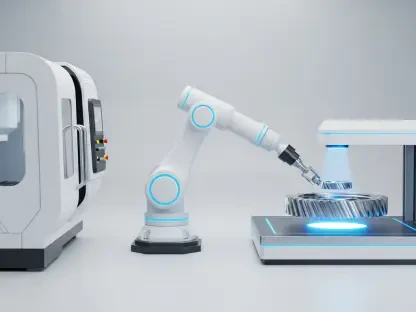In the annals of science fiction, humanoid robots have long held a prominent position. These creations span a wide spectrum, from the clearly mechanical with limited capabilities to those indistinguishable from humans, exhibiting superior physical prowess and cognitive abilities. For years, these fictional depictions have been dismissed as mere fantasies, alluring yet firmly anchored in a distant future—one that felt safely beyond our lifetimes. However, recent advancements are rapidly transforming this speculative future into pressing reality, complete with complex implications for modern society.
Technological Advancements Blurring Fiction and Reality
Humanoid robots have taken notable strides in both development and real-world application. Far from being limited to stationary, gimmicky shop assistants welcoming customers in trendy Tokyo department stores, today’s iterations are equipped for complex industrial tasks. These include welding, moving heavy objects, and inspecting products and facilities. This rapid technological evolution has been unsettling, accelerating faster than society anticipated. The boundary between the fictional and the functional is increasingly blurry, and it has forced a reevaluation of long-held views about the potential of robotics.
Remarkably, manufacturers have opted to design these robots to look mechanical rather than human. Despite their outward appearances, their movements and task performances are eerily human-like. This uncanny resemblance triggers curiosity about potential biological integrations, sparking discussions about the intersection of robotics and organic life—the realm of cyborgs. The visually jarring nature of these robots doesn’t mitigate the sense of awe and unease they invoke. As humanoid robots become more sophisticated, the debate about their role in society intensifies, touching on ethical, practical, and philosophical dimensions.
A Powerhouse Beyond Automobiles: Tesla’s Optimus Robot
Elon Musk, a figure synonymous with cutting-edge innovation, has predicted that Tesla’s humanoid robot, Optimus, will overshadow even the company’s monumental success in electric vehicles, Starlink satellite internet, and the X social media network. The market response has been a mix of intrigue and skepticism. Tesla, a dominant player in the electric vehicle market with over 1.8 million car sales in 2023 alone, faces unique challenges in integrating Optimus into everyday life. Musk’s vision for a future enriched by humanoids evokes both excitement and caution, with many industry observers closely monitoring how these ambitions unfold.
As of now, the market readiness for such advanced robots is doubtful. Industrial tasks such as welding have long been the domain of specialized robots, designed for efficiency and reliability. Replacing them with humanoids seems unnecessary at present volumes and technological stages. However, looking ahead five years, the landscape may shift. Redesigns in production lines towards increased mobility could create niches for humanoid robots. These adaptable units could traverse assembly lines, bringing unprecedented flexibility and efficiency. The true test will be whether these robots can outperform current industrial automation in a cost-effective manner while seamlessly integrating into existing infrastructure.
Humanoids, Androids, Cyborgs: Understanding the Differences
Humanoid robots are designed to replicate human physical structure and movement. They may or may not feature human-like faces but generally mimic human motor functions. In contrast, androids are a specific subclass aiming to be indistinguishable from humans, incorporating human-like emotions and behaviors. An example from fiction would be Data from Star Trek. Cyborgs, on the other hand, blend biological and mechanical systems, combining human or animal components with robotic enhancements. This nuanced differentiation is essential for understanding the range of possibilities and limitations within robotic development.
Presently, humanoids are making significant strides across various sectors, while androids remain primarily within the academic and aspirational commercial realms due to the complexity of mimicking human behavior and the current market’s limited demand. The gradual advancements in AI capabilities and machine learning algorithms are pushing the envelope for androids, but achieving human-like emotional intelligence remains a formidable challenge. Cyborgs, despite their longstanding place in science fiction, remain largely theoretical. Yet, experimental efforts in medical sciences, such as brain-computer interfaces, indicate that this fusion might not be entirely far-fetched, setting the stage for potential breakthroughs that could revolutionize both human and robotic functionalities.
Predicted Market Growth and Technological Hurdles
The Asia-Pacific sector predicts significant growth for the humanoid robot market. From an estimated $2.43 billion in 2023, projections suggest skyrocketing to $66 billion by 2032, reflecting a compound annual growth rate (CAGR) of 45.5 percent. While speculative, this forecast underscores a potential paradigm shift towards widespread adoption. As market interest intensifies, technological advancements must keep pace to meet these projections. Innovations in AI, hardware, and system integration will play pivotal roles in determining the viability and success of humanoid robots on a global scale.
Despite promising developments, critical technological challenges remain. A pivotal challenge is achieving human-like interaction and understanding. The Turing Test, an evaluation of a machine’s ability to exhibit human-like intelligent behavior, remains an aspirational milestone. Overcoming these hurdles requires advancements in natural language processing, emotional intelligence, and contextual understanding. Another significant challenge is overcoming human discomfort, known as the “Uncanny Valley” phenomenon. This entails innovative designs and materials to create natural appearances and movements that convey familiarity without unsettling users. Furthermore, the development of compact, long-lasting power sources is crucial for practical deployment in diverse environments. Experimental advancements, like the fantastically enduring diamond batteries, present potential solutions but also pose significant cost barriers.
Legal and Regulatory Considerations
As humanoid robots integrate into daily life, comprehensive legal frameworks are essential. These frameworks need to address safety standards, ensuring that robots operate without causing harm to humans. Establishing clear, enforceable guidelines for robot behavior is imperative for building public trust and ensuring the safe deployment of these technologies. Liability concerns must also be meticulously addressed, determining accountability in cases of malfunction or misuse. The complexity of assigning responsibility, particularly in scenarios involving autonomous decision-making, necessitates a multidisciplinary approach involving technologists, legal experts, and policymakers.
Ethical guidelines are another critical component, establishing acceptable norms for robot behavior and human interaction. These guidelines should encompass issues like data privacy, consent, and the ethical implications of humanoid robots performing tasks traditionally reserved for humans, particularly in caregiving and sensitive environments. Tailoring these legal and ethical frameworks to keep pace with rapid technological advancements will be an ongoing challenge. Governments, industry leaders, and academic institutions must collaborate proactively to anticipate and address emerging issues, ensuring that the integration of humanoid robots into society benefits humanity as a whole.
Pioneers in Humanoid Robot Development
Humanoid robots have long been a staple in the realm of science fiction. These fictional beings range from clearly mechanical creatures with limited abilities to those nearly indistinguishable from humans, possessing extraordinary physical and cognitive skills. For many years, these portrayals were regarded as mere figments of imagination, captivating yet believed to be anchored in a distant future nobody expected to encounter within their lifetime. However, recent advancements in technology are swiftly transforming this once-speculative future into an increasingly tangible reality.
Rapid innovations in robotics and artificial intelligence are bringing us closer to creating robots that can perform complex tasks, interact seamlessly with humans, and even exhibit what might be considered ‘intelligent’ behavior. These developments are not just fascinating but also pose significant implications for our society. Issues of ethics, employment, privacy, and the very definition of humanity are coming to the forefront as we navigate this rapid transformation.
The transition from science fiction to science fact raises many questions: how will these robots be integrated into everyday life? What regulations and ethical guidelines will govern their use? How will employment landscapes shift with robots in the workforce? As we forge ahead into this new frontier, it’s clear that the once-distant future of humanoid robots is becoming an increasingly present reality, demanding our immediate attention and thoughtful consideration.









